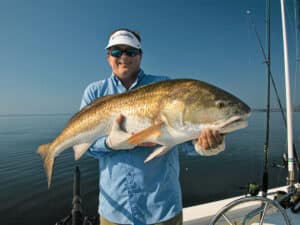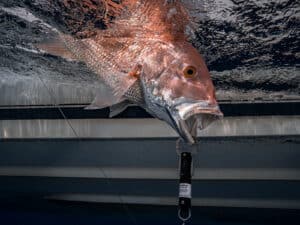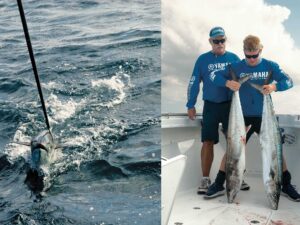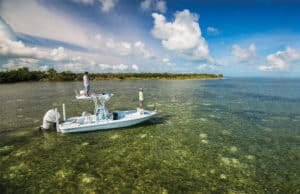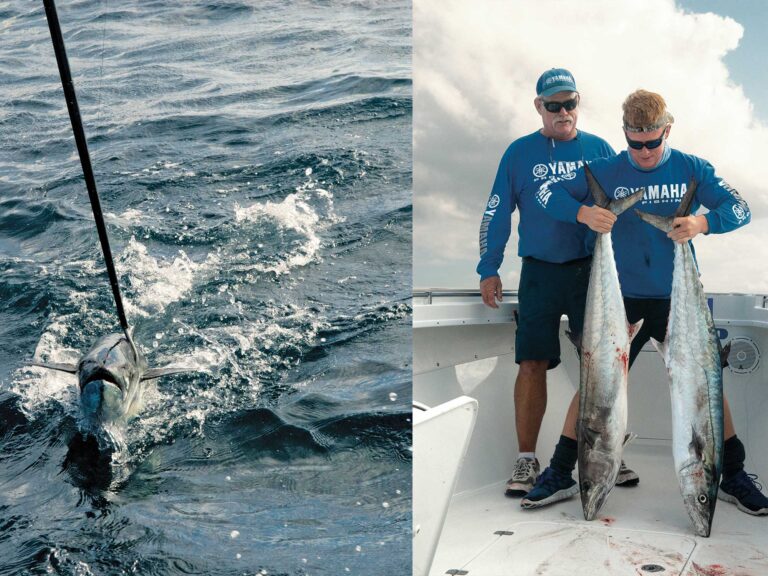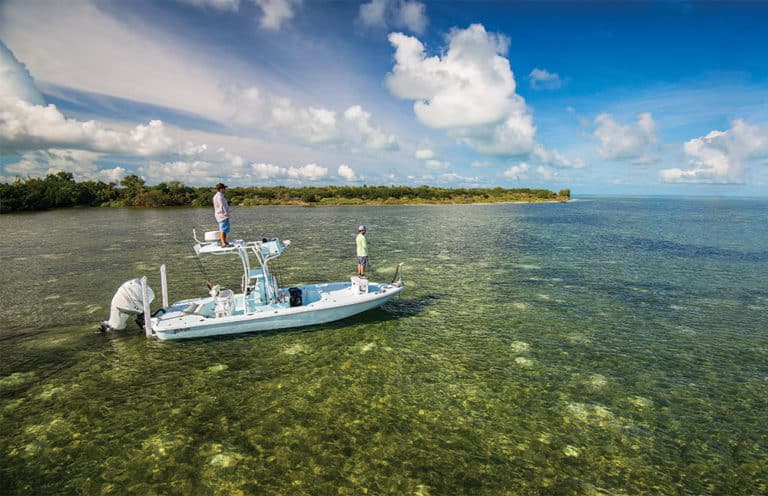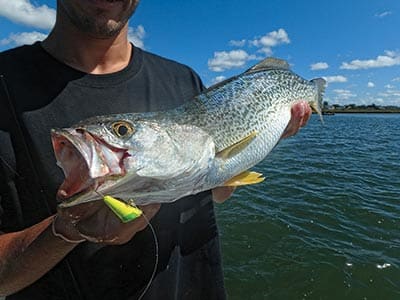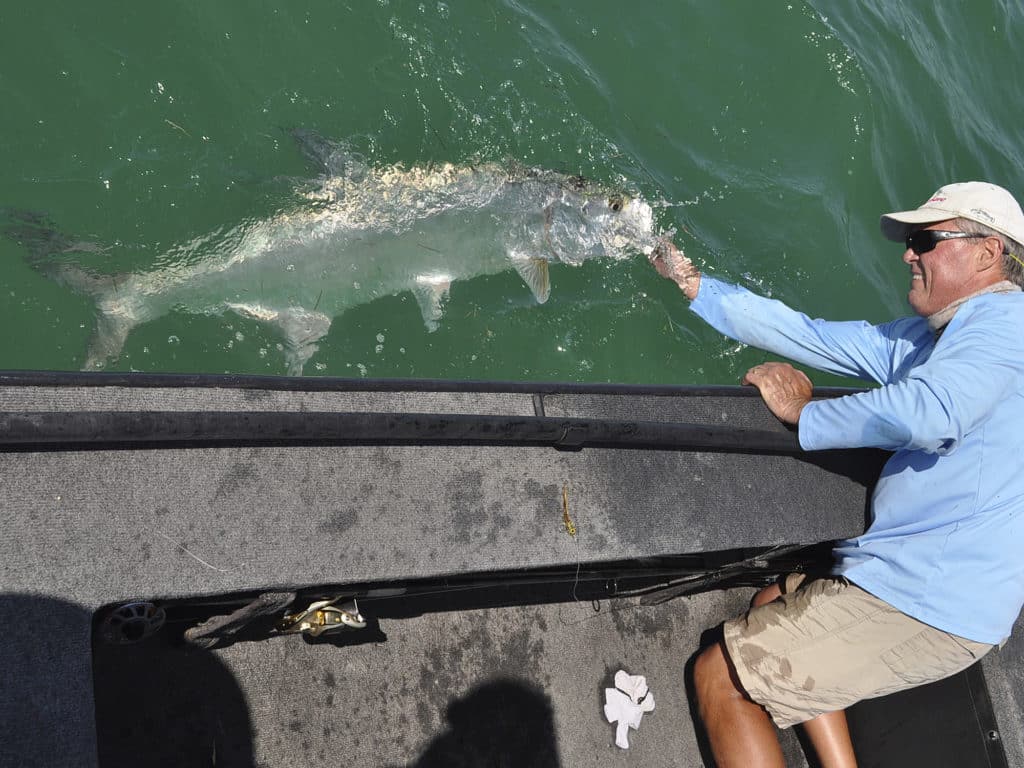
When it comes to tarpon fly-fishing, Florida is hands-down the epicenter, reason why anglers from all over flock to the Sunshine State in late spring and early summer in hopes of tangling with the silver king. While adult tarpon — those 70- to 150-plus-pounders — garner the most attention from traveling fly fishers, the youngsters also come out to play in many locales, so packing the right gear lets you cash in and save the day or even the trip.
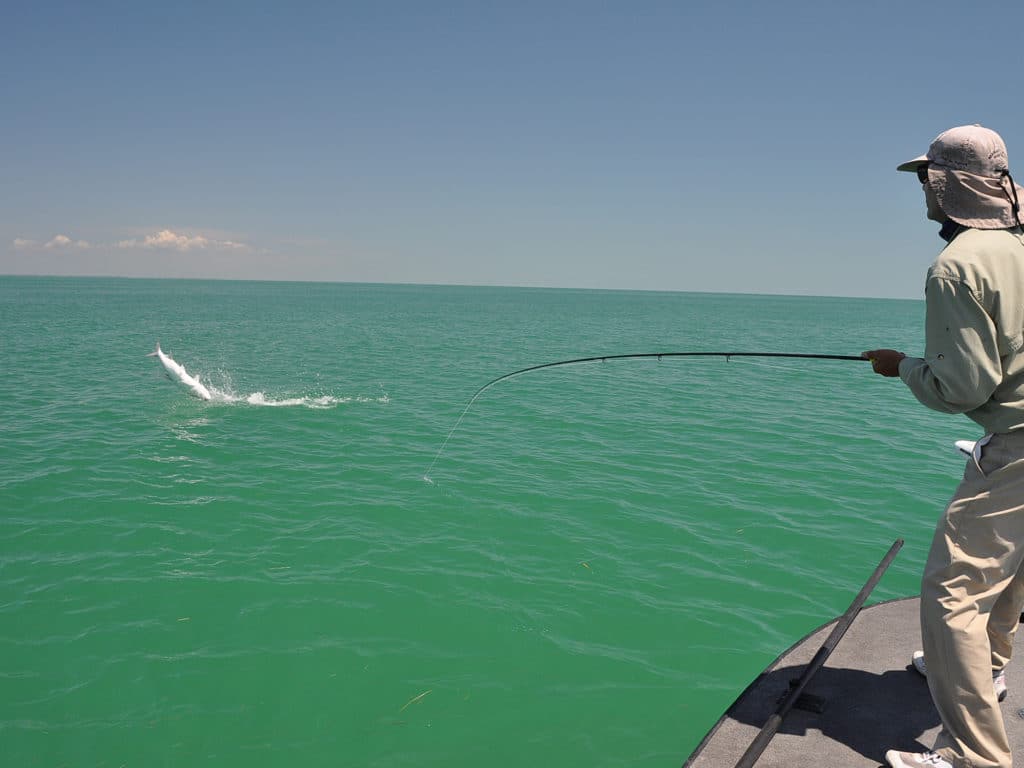
Don’t Guides Use Special Tackle?
If you have booked a guide, chances are he will outfit you with the proper tackle. But many guides are open to anglers bringing their own fly rods, as long as they’re up to snuff. Depending on the chosen destination, you may encounter the full size spectrum — tarpon from 10 to over 100 pounds, so it’s a good idea to carry a quiver of three or four fly rods from a 9- to an 11-weight (or 12 if you prefer) to cover all bases.
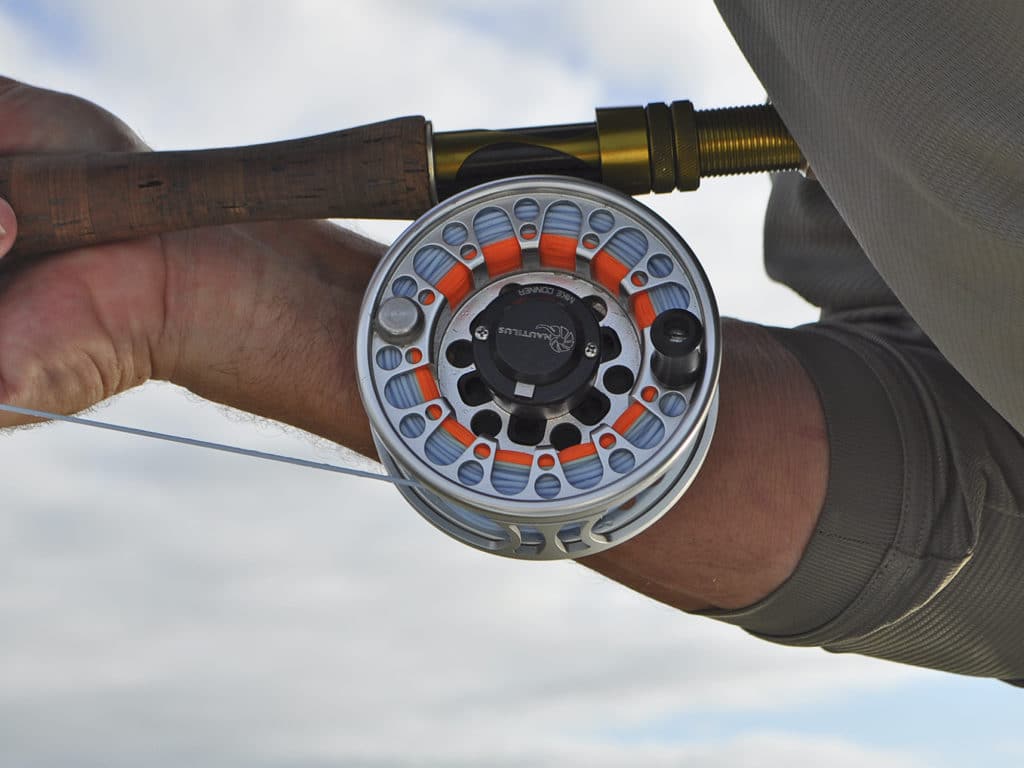
Choose Your Weapons
Your big stick, be it an 11- or a 12-weight, is bound to get the most playing time if you primarily target the larger poons. Yet a 10-weight rod could be called into service if the wind dies and the water suddenly lacks the surface ripples that keep the fish from turning ultra wary. That 10-weight can easily cast the smaller tarpon flies and lighter bite tippets in vogue nowadays. In fact, fly rodders with lots of tarpon time under their belts are increasingly picking up a 10-weight for fish pushing the century mark. Of course, that same rod will serve you well if you end up casting at fish under 60 pounds, and many late-summer tarpon fall in this category. In addition, there are spots in the backcountry that hold 10- to 30-pounders, then a 9-weight rod is hard to beat.
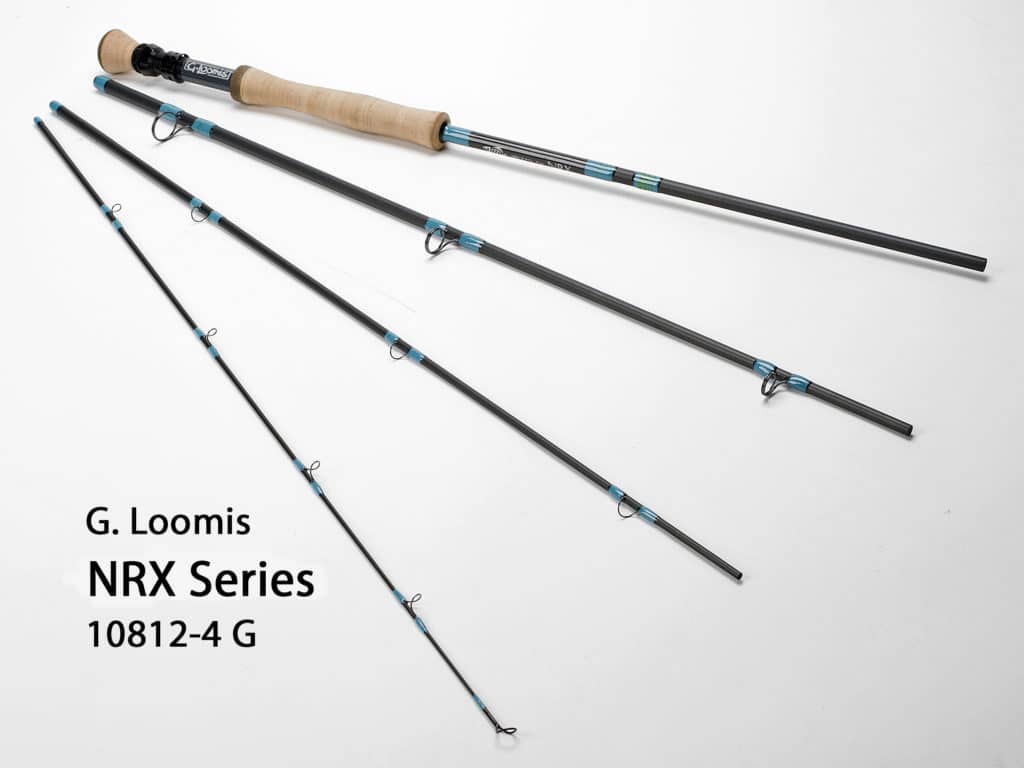
G. Loomis NRX Rods
This fly rod series is not a beefy version of G. Loomis’ popular GLX family, it is built on completely new mandrels and with different schedules of higher modulus graphite. Pick one up and you immediately notice how light it feels. Cast it and you realize what a powerful, fast-action stick the NRX is.
Nano Resin technology, with microspheres filling in the space between the high-modulus graphite fibers, produces a lighter, stiffer, more dense and considerably stronger material, which translates into rods that are more sensitive, more durable, and produce the kind of line speed needed to cast tight loops with bulky flies into a stiff ocean breeze. And the 12-weight NRX is more than a great casting rod, it’s also capable of putting serious heat on big, powerful saltwater fish, like tarpon.
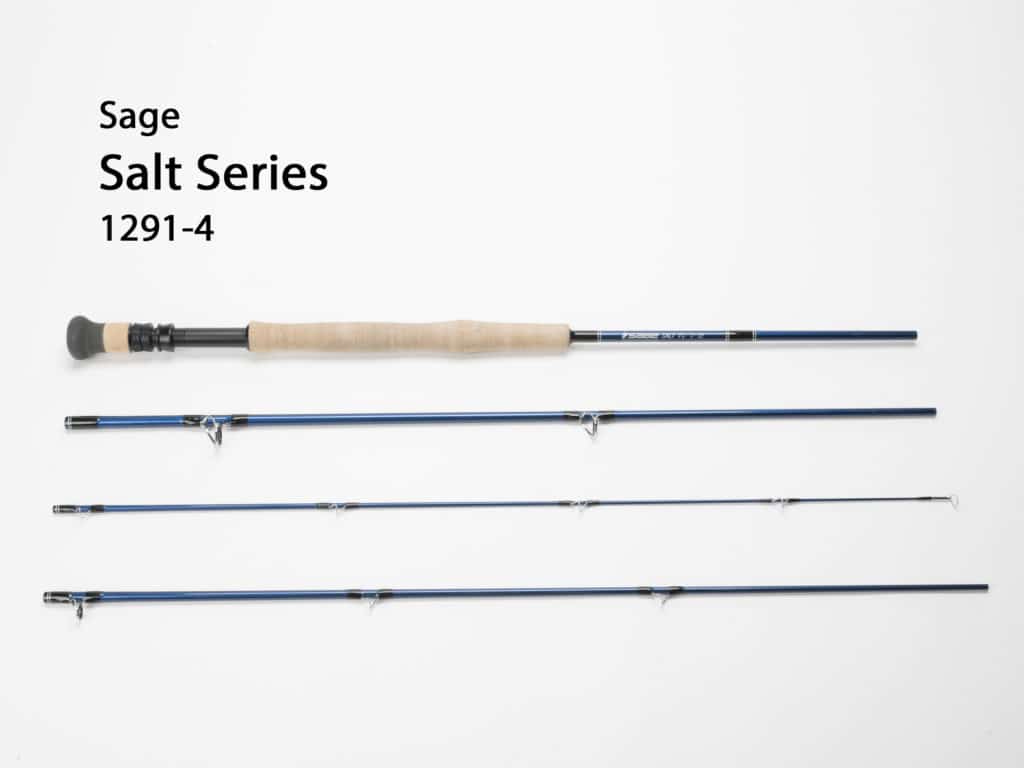
SAGE SALT FLY RODS
Sage Salt Rods
For the wide range of casting situations a tarpon angler faces, the Sage SALT is a superb option. Taking full advantage of the strength and precision afforded by Konnetic Technology, Sage came up with the SALT series of fast loading, high line-speed, fast-action rods that inspire the confidence necessary to drop the fly quietly in front of a laid-up tarpon or deliver it quickly in the path of a cruising silver king in a 15 knot wind with minimal false casting.
Boasting a perfect balance of castability and lifting power, the SALT is just as adept at long-distance presentations as it is at making the quick, short casts required for those close encounters with tarpon that suddenly show up out of nowhere. And when it comes to fighting fish, the rod has more than enough backbone to put the screws to a big poon and even pull it up to the surface, should the fish go down in a channel or a pass.
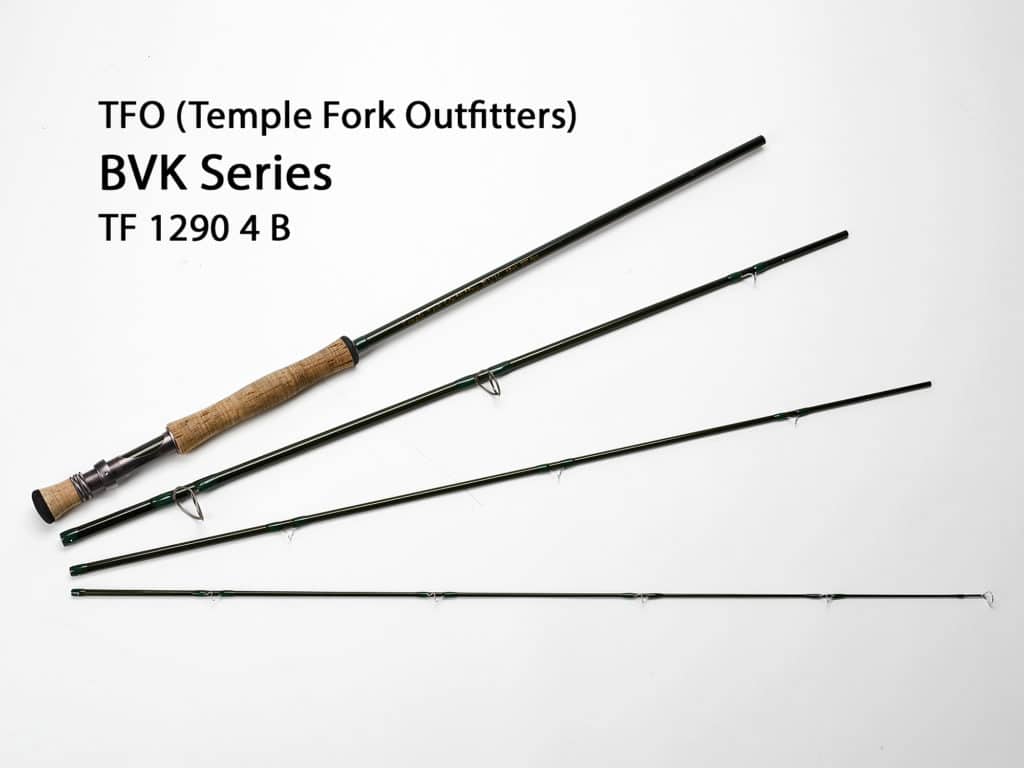
TFO BVK FLY RODS
TFO BVK Rods
A great alternative for the tarpon angler on a budget, Temple Fork Outfitters’ BVK rods were designed with input from legendary fly rodders Lefty Kreh and Flip Pallot, and Rob Fordyce, a perennial tarpon tournament winning guide. BVK series rods are built with new materials that drastically reduce weight and offer what TFO labels an aggressive blend of power and strength.
Don’t be fooled by the comparatively modest price tag, these rods are excellent casting and fighting tools that are backed by an unconditional lifetime warranty and incorporate a number of premium components, including braided carbon fiber reel seats, TFO’s exclusive Tactical Series stripping guides (hard-anodized stainless steel frames and super hard chrome-anodized, stainless steel inserts) and chromium-impregnated stainless snake guides.
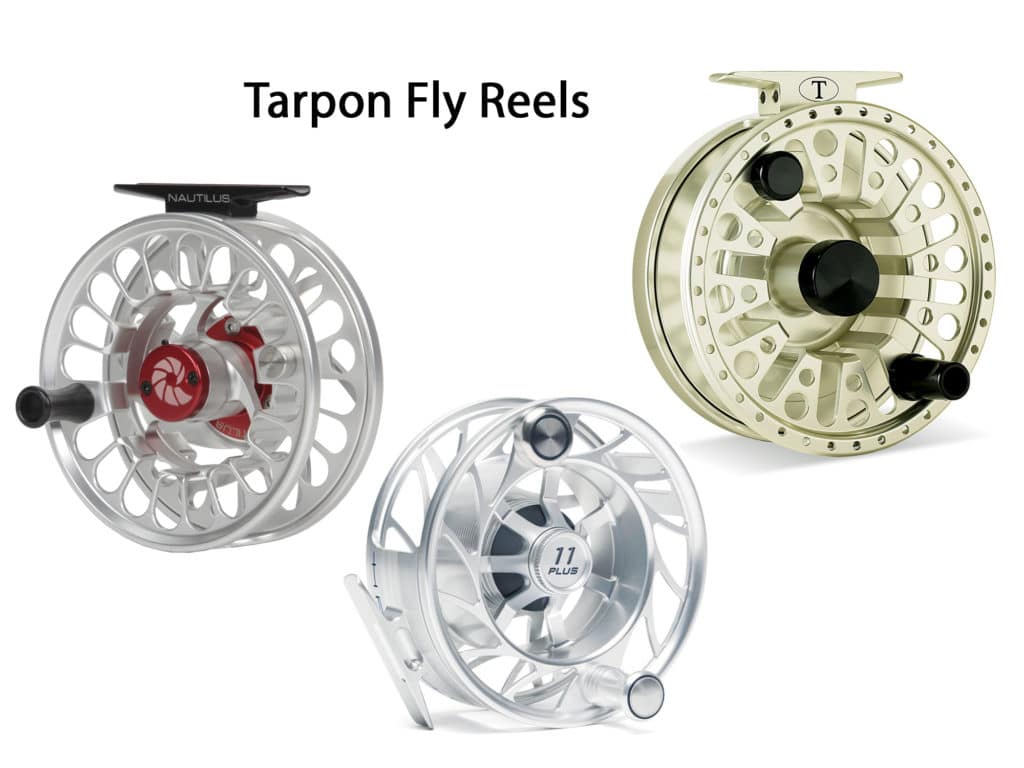
TARPON FLY REELS
Poon Reels
Where reels are concerned, big tarpon peel over a hundred yards of backing off the spool in a hurry, so a smooth, dependable drag and ample line capacity (300 yards or more) are in order. Recovering lost line quickly is essential, so a large-arbor design is a big plus. And as a hooked fish settles down and the tug of war begins, the reel is subject to intense pressure for prolonged periods, so I strongly recommend a machined aluminum reel that performs consistently despite the punishment.
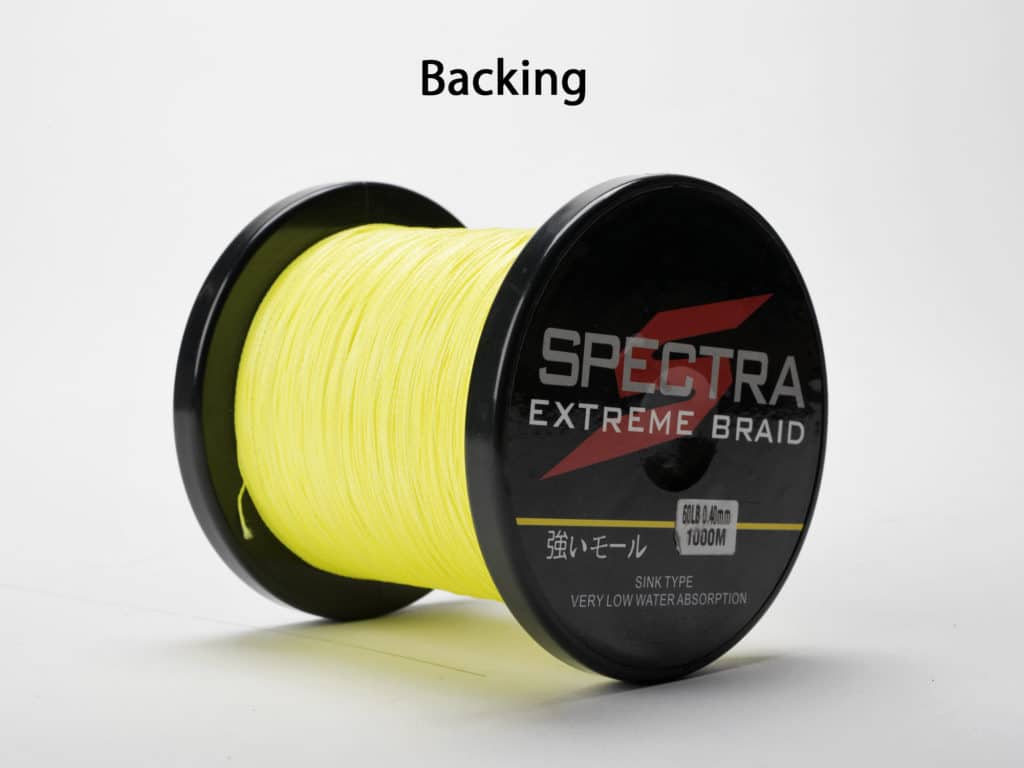
FLY REEL BACKING
Backing Options
The ideal backing is 30-pound Micron. Some fly fishers go to gelspun (braid) because its small diameter-to-strength ratio allows the use of smaller, lighter reels without sacrificing line capacity. Be warned, however, that a sudden run could leave a nasty cut when you are using your fingers to guide the backing onto the spool.
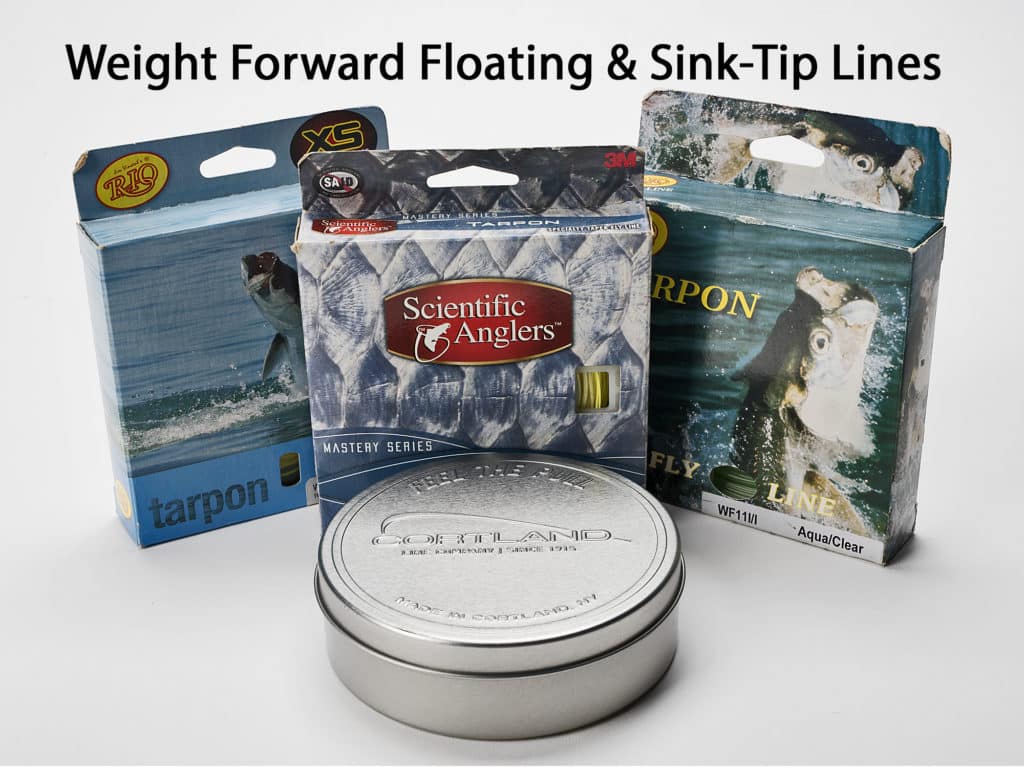
TARPON FLY LINES
Selecting Fly Lines
As for fly lines, a full floating, opaque line (stay away from bright colors) is the workhorse when sight fishing tarpon. But a growing number of fly anglers are experimenting with clear floating lines, like those made by Monic, Cortland, and others, for additional stealth when dealing with wise, heavily-pressured tarpon. The clear line allows for slightly shorter leaders as well, which facilitates easier fly turnover.
When it’s windy, the chop in the water can hinder your fly presentation if you are using a floating line. Some anglers swear by floating lines with clear, slow-sinking tips, but a clear intermediate line sinks just under the surface and remains unaffected by waves, so the fly swims true. This line also sinks just enough to not funnel floating grass — often a nuisance on windy days — down to your leader and fly as you strip. So, aside from the floating tarpon- or saltwater-taper lines, bring at least one clear intermediate line for the rod you’ll likely fish most.
If there’s a chance you’ll need to dredge for tarpon around bridges, or in inlets and passes, you better pack a full medium- to fast-rate sinking line. And because fly lines sometimes suffer damages while fighting a tarpon around rough territory, it makes sense to take a spare for every line you have on your reels, ideally on spare spools ready to fish.
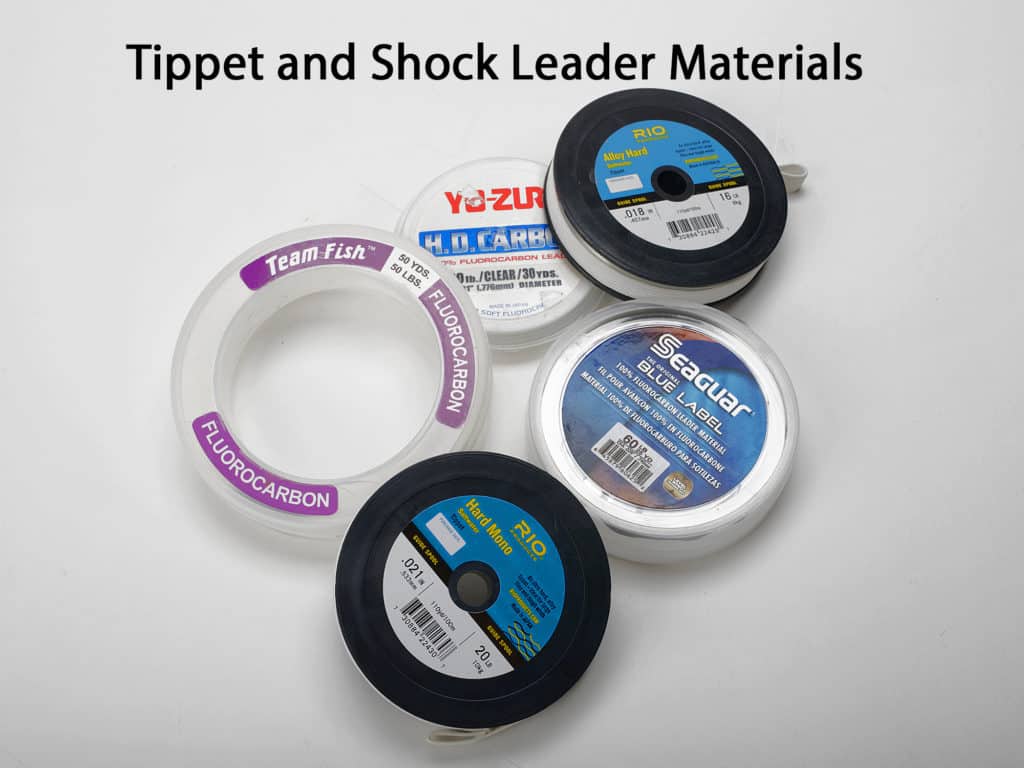
FLY TIPPETS AND LEADERS
Tippets and Leaders
Leaders can be anywhere from 6 to 12 feet long, depending on presentation demands. Clear lines and clear-tips allow for shorter leaders, but for a floating line, a 10-foot leader is typical. It consists of a 6-foot, 40- or 50-pound butt section, looped to a 12- to 20-pound-test class tippet with Bimini twists in both ends. Some fly fishers eschew the Bimini and loop-to-loop connections in favor of improved blood knots, but the loop system allows for quick fly and leader changes, if you carry some rigged on a fly leader stretcher. Even if you buy knotless or pre-tied leaders, also pack spare spools of leader material, 16- and 20-pound for tippets and 40-, 50-, 60- and 80-pound for the bite or shock trace.
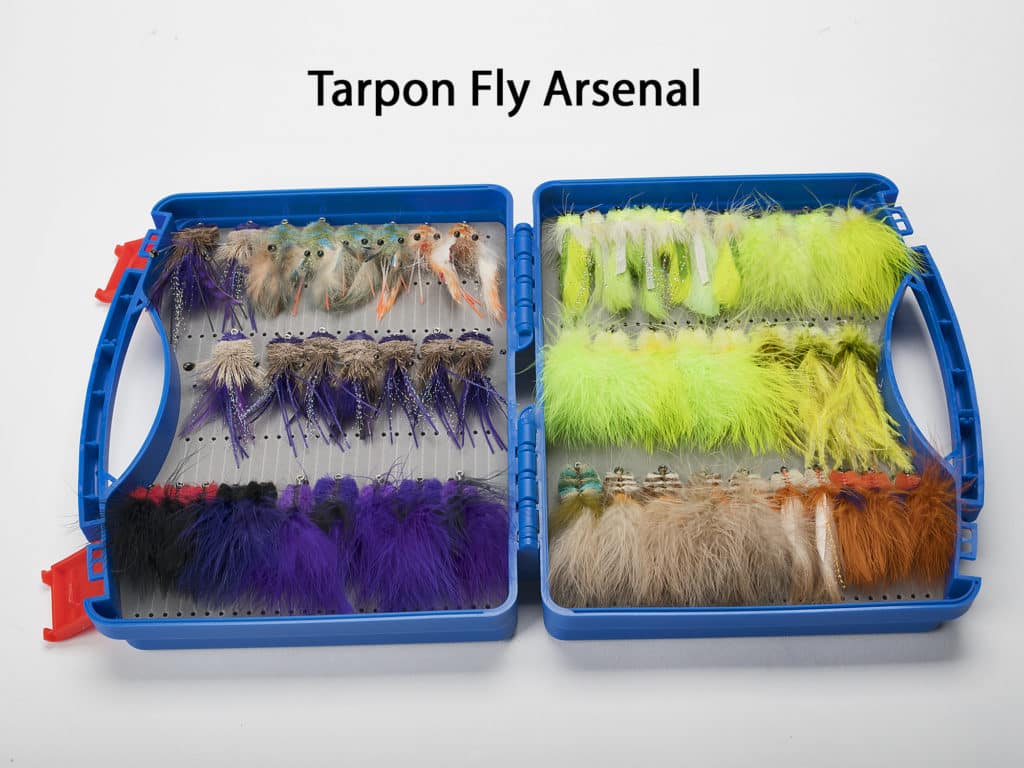
TARPON FLY SELECTION
Fly Selection
If you fish with a guide, flies won’t be a concern. He probably has a few proven patterns he guards with his life. If you’re going at it on your own, call fly shops near the area you’ll be fishing to stock up on the local standards or tie a selection based on their recommendations. Otherwise, it’s a good idea to carry a selection of proven tarpon patterns in various colors and sizes.
Attractor patterns such as the venerable Tarpon Toad (in tan, chartreuse, and black-and-purple), EP Tarpon Streamer in purple-and-black, EP Mullet, and Lemay’s Tarpon Snake are effective picks. And the Borski Orange Butt fly is a good shrimp pattern. If you need sparse stuff for clear water and fussy fish, try the Tarpon Tapas patterns. And for worm hatches (Florida Keys), top choices are the Chili Pepper Worm, Gummy Tarpon Worm, and the Foam Worm. Keep in mind that smaller flies, tied on 1/0 or 2/0 hooks, are the trend now in Florida waters, and carry at least a few of your selections with weed guards, for those occasions when the surface is blanketed with floating grass.
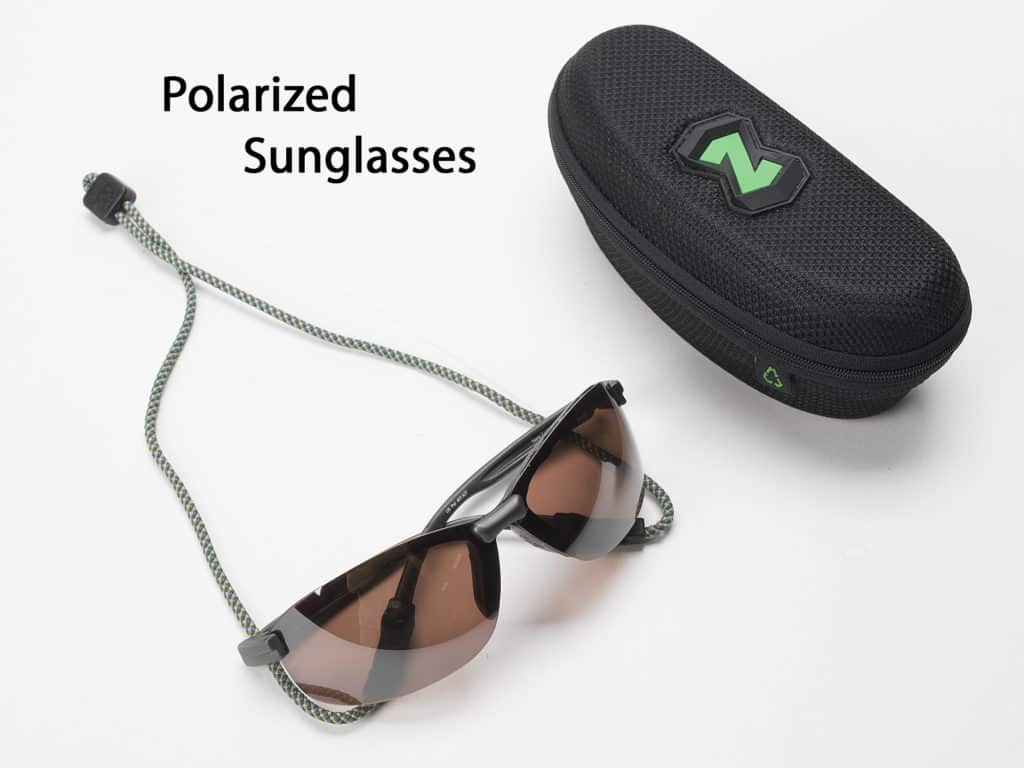
SUNGLASSES FOR SIGHT FISHING
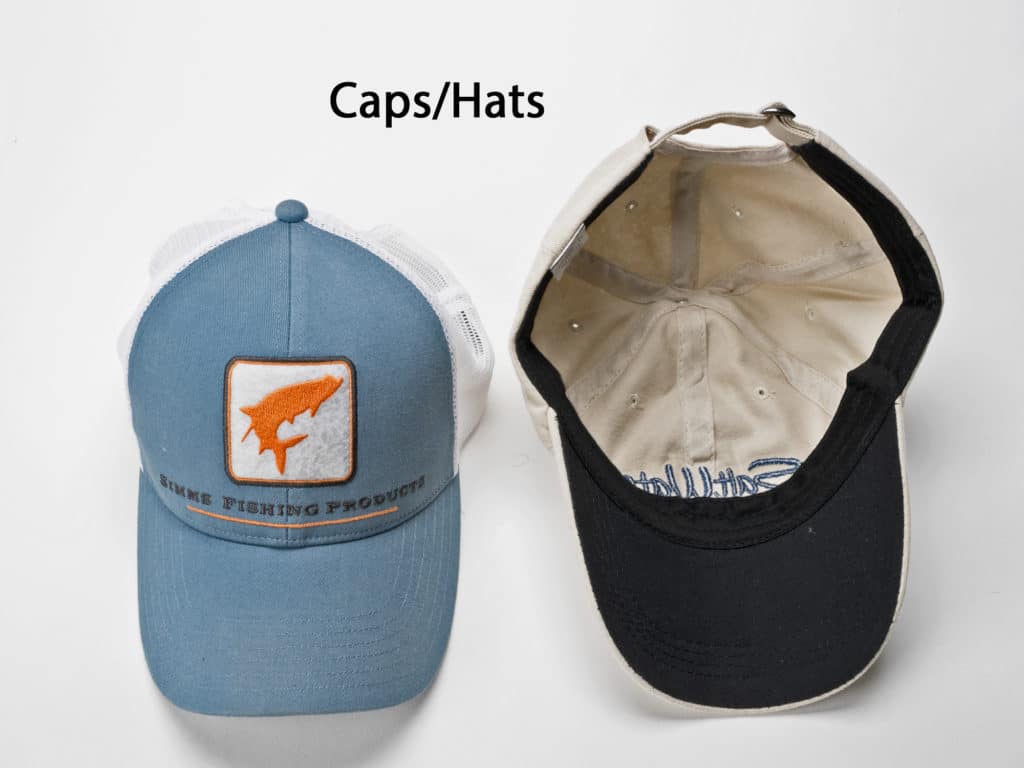
FISHING HATS AND CAPS
For Sight Fishing
Top-grade polarized sunglasses, in brown or copper tint are a must, with amber a nice addition for low-light conditions. A broad brimmed hat or a cap will shade your eyes and help you spot fish. FYI, if the under side of the cap is dark, it cuts the glare more and helps you see better. Of course, bring spares of the specs and hat.
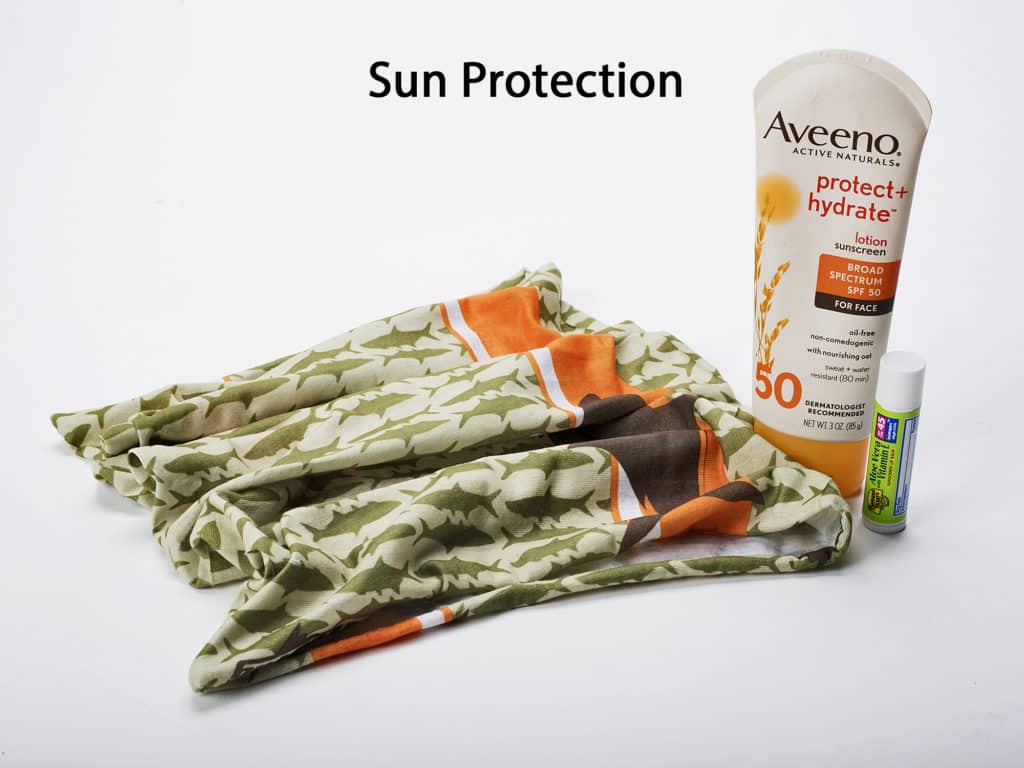
SUN PROTECTION
Sun Protection
Also pack a Buff or similar stretchable face mask to protect your face, and a pair of sun gloves, which, aside from keeping the back of your hands from getting sunburned, provide a solid grip on your rod, even with sweaty hands. It goes without saying that lip balm and a good, sweat-proof sunscreen of 30 SPF or higher also belong in your bag.
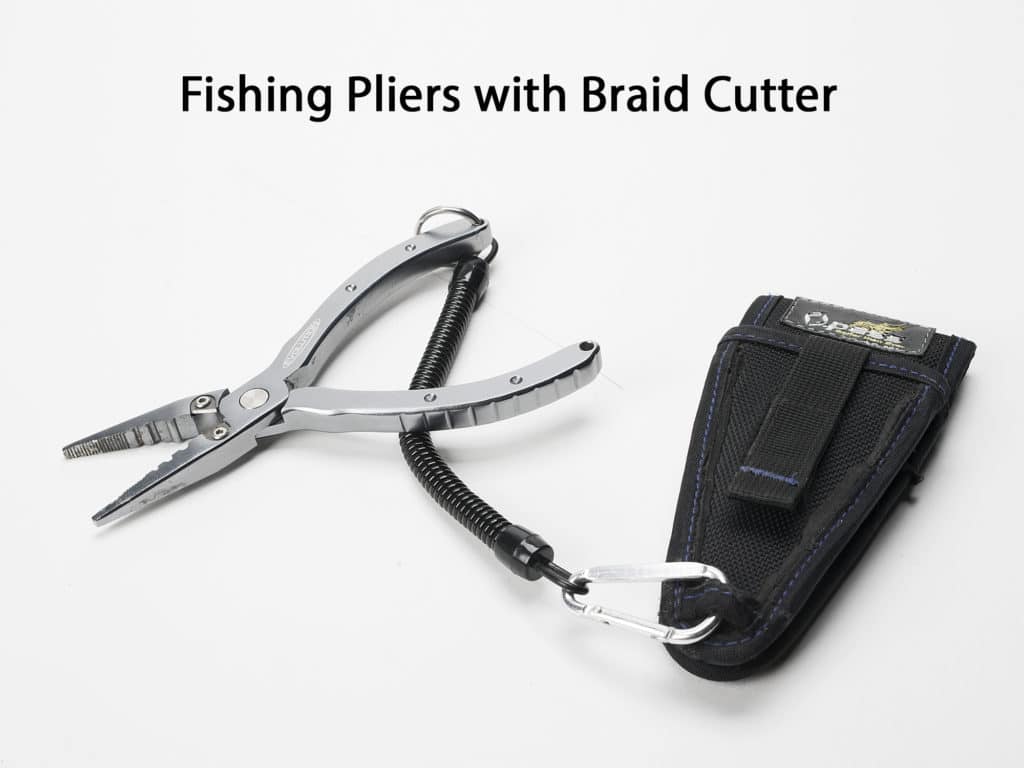
TARPON FISHING ACCESSORIES
Accessorize
Don’t count on the guide having pliers, bring your own, preferably a pair with cutters that can handle braid. And, though today’s top quality hooks are chemically sharpened, carry a good hook sharpener, such as an EZE-Lap diamond hone, to touch up the hook point on your flies after an encounter with hard structure, like the boat, coral bottom, or a tarpon’s rock-hard mouth.
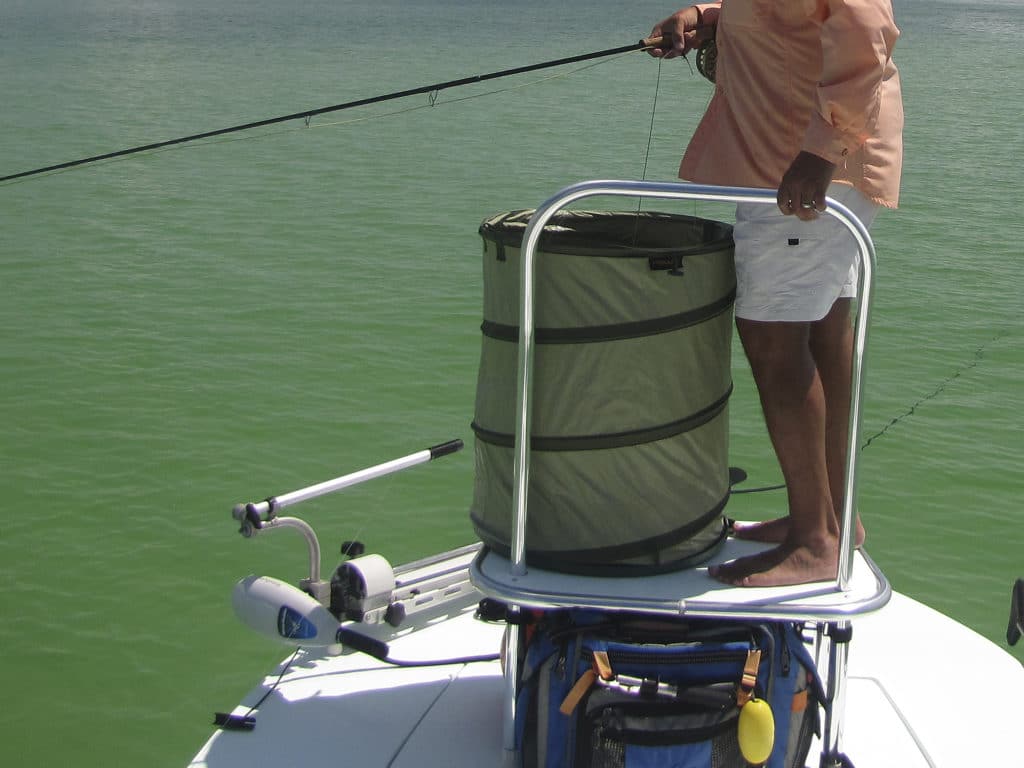
FLY FISHING BAREFOOTED
Footwear for Fly-Fishing
And, while fly fishing barefoot is recommended (so you know when you step on the line), not everyone can stand shoeless on a rocking boat for hours. So if you have arch or general foot problems, invest in a pair of athletic-style deck shoes with top-grade cushioning to minimize fatigue, especially if you’ll be fishing several days in succession.
Bone Up and Shape Up
Topnotch tackle and the ideal flies won’t mean much if you haven’t picked up a fly rod in a while when you go looking for tarpon. Casting an 11- or 12-weight from the front deck of a skiff rocking in a moderate chop is not easy, so practice a fair amount ahead of time, preferably during windy conditions, with a full leader and a typical tarpon fly (with the hook cut at the bend) attached.
Practice short casts (30 to 50 feet) and long casts (70 feet and beyond), with the wind and against it. Also practice delivering a backhand cast to maximize your opportunities. Tarpon can appear less than 30 feet away on “bad vis” days, so practice getting the fly from your hand to targets at various distances in under 6 seconds.
Tarpon fishing is an endurance sport and it happens in pretty warm, humid weather, so also work on improving your strength and stamina before your tarpon trip. Increase aerobic activity, do exercises to strengthen your core, your forearms and wrists, and do deep knee bends to get your legs and feet ready for long hours of standing on deck. Shaping up a bit will go a long way toward ensuring a fun and successful tarpon expedition.

